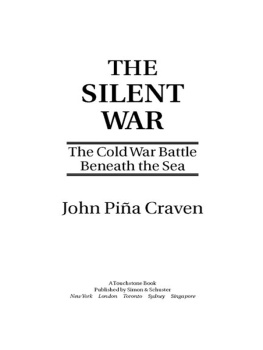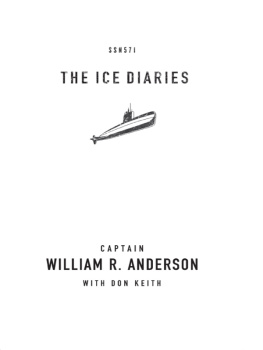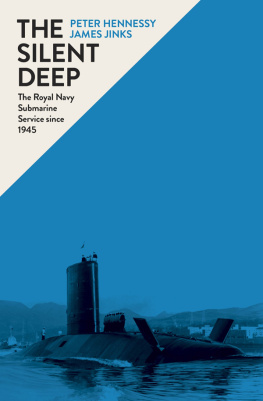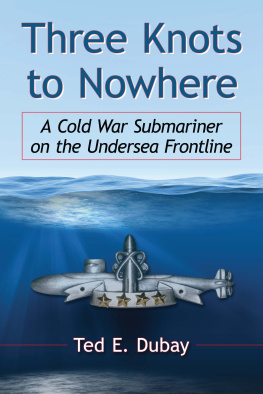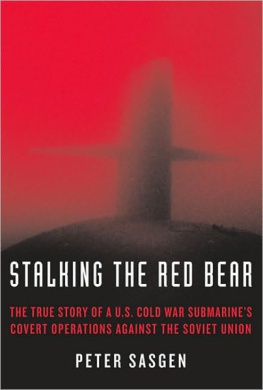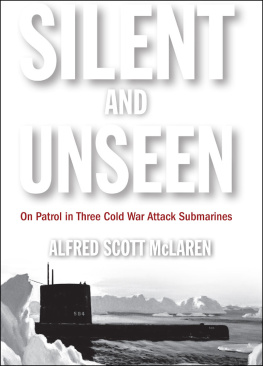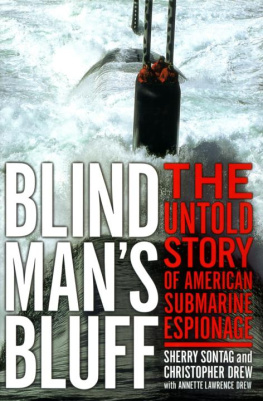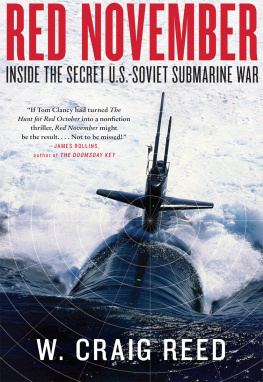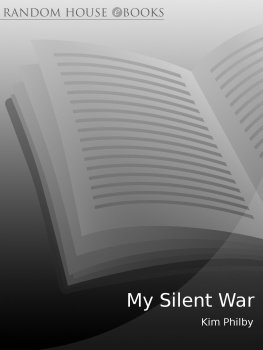I am indebted to agent Peter Matson for taking a chance on an unproved author; to writer Robert Katz for teaching me the crisp prose of a best-seller; to Maja LaBelle Clark for helping me bridge the generation gap; and to editor James Wade, who extracted coherent history from a set of uncoordinated tales.
I acknowledge that I have been, at best, an anthropological informant for the men and women of the Navy and the nation's intelligence services, who collectively and heroically won the Cold War.
Prologue
The Polaris Marching and Chowder Society meets for breakfast on the first Wednesday of each month at the Columbia Inn, a classic Honolulu eatery. It has met without fail for more than two decades. Its members became joined at the hip for their roles in the genesis of the Polaris Fleet Ballistic Missile submarine systemthe first undersea fleet dedicated to the deterrence of nuclear war. Most of them are graduates of the United States Naval Academy and all were actively involved as submariners in World War IIall but one, the author of this book.
After their retirement many of the society members continued as civilians employed in transforming the silent service into the most effective source of the intelligence that won the Cold War; the most effective suppressor of conflicts in Southeast Asia, Asia Minor, and the Middle East and the preserver of peace in the perilous days that lie ahead. What prevents this breakfast from being just another gathering of old-timers volleying memories is the regular attendance of the active duty commander of the submarine forces of the Pacific fleet (COMSUBPAC) and members of his staff. This is a family breakfast and a rare opportunity for the family elders to offer their wisdom to the young in command.
I am the adopted member of this family. My undersea career in a civilian capacity does not qualify me to wear the submariner's Dolphins. But I share with the most weathered of these veterans a lifetime of naval experience and a key role in the genesis of the Polaris system. I was a battleship sailor in World War II and share anchors aweigh memories of Pearl Harbor departures for missions in that seemingly endless war. On those last nights in port we would drink to the foam and seek, but rarely find, intimate company with that mythical Polynesian maiden who sang:
Now is the hour when we must say goodbye.
Soon you'll be sailing, far across the sea.
While you're away, O then remember me.
When you return you'll find me waiting here.
Uncertain that he will ever return, the battleship sailor casts off bow and stern lines on the mooring piers of Battleship Row. The crew, lining the rail in spotless whites, renders honors to the sunken Arizona, whose rusting superstructure protruding from the waters marks her grave. Slowly steaming out of the channel that separates Ford Island from Hickam Field, all eyes on the port side are fixed on a bordello-pink structure on the hill above the harbor. Wreathed in the orographic clouds that cover the mountaintop, or under the arch of morning and evening rainbows, the building, Tripler Army Hospital, looks like the anteroom to heaven. The same fantasy plays behind every sailor's gazethat he will be wounded just enough to spend the duration of the war rehabilitating in that hillside retreat.
As the hospital fades from view, another vision in pink appears, enticing and no more attainable than a mirage. It is the Royal Hawaiian Hotel on Waikiki Beach. Surface ship sailors are jealous, even angry, for the pink palace is the exclusive rest and recreation domain of the submariner. There are no purple hearts for submariners, but awaiting all who return from patrol is an idyllic vacation in a sailor's paradise.
Every submariner is a volunteer who has chosen to gamble his life at high stakes. The submariner casting off bow and stern lines at the sub base is certain that he will come back whole or not at all. There is no thought of Tripler. Instead, as they pass the Royal Hawaiian, all aboard fantasize that this submarine will return from its patrol for one spectacular fling at the Royal Hawaiian.
Regardless of service, submariner and surface ship sailor shared the same fatalistic view that the Second World War was endless. Anyone planning for the future did so expecting the war to last ten years. Then on August 6, 1945, the power of the atom bomb was unleashed on Hiroshima. Lives were vaporized, steel beams twisted into writhing ghoulish forms, and the mushroom cloud was burned into our collective consciousness as the icon of nuclear war. From that day on, everyone knew that World War II was over, but no one understood the full consequences of unleashing the nuclear genie. Who could have anticipated the puniness of human flesh and habitat against the power of the atom released from a single airborne weapon?
Sailors, submariners, and others in the armed services celebrated their freedom. Those who had families could return to them. Thanks to the GI Bill of Rights, most veterans of the war could enjoy four years of education at the school of their choice. Those who at war's beginning had not yet set foot on a career path pursued new professions with vigor. Some continued their career in the service or as civil servants for the military. I was one.
The formation of the United Nations seemed to assure hope for years of peace. And there was the hugely comforting thought that our side had the monopoly on the bomb and its technology. It would be our shield as we waged peace.
An iron curtain descended over Europe and soon the Cold War became a hot war. Times were then, as they are now, dangerous. The Korean War was one of the bloodiest short wars in history and the warriors of World War II were participants. I was one. The conflict was stanched in 1953.
The United States had lost its nuclear monopoly to the Soviet Union in 1949. The Navy responded by establishing the Special Projects Office to develop the Polaris Fleet Ballistic Missile System. The office was manned almost exclusively by officers and civilians who had experienced combat in World War II and had learned that carnage in the abattoir of battle was the most obscene human activity. They were determined to devote their careers and their lives if necessary to preventing and deterring war. I was one.
Deterrence was not enough. The same cadre of dedicated individuals, the same group whose alumni would form the Polaris Marching and Chowder Society, embarked on a four-decade program of undersea intelligence whose missions, whose very existence was so clandestine and so classified that participants knew they would go to their graves with their success and sacrifice unacknowledged by the nation they were defending. I was one. This submarine espionage program would uncover and expose cracks in the Soviet Union so that Soviet leaders could eventually see for themselves the risk of nuclear war engineered by renegade military elements. Only then would the leadership transform itself and adopt policies of openness and restructuring, glasnost and perestroika. Then in 1998 a book entitled

